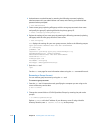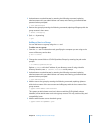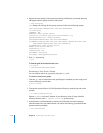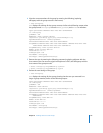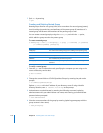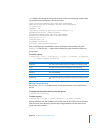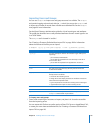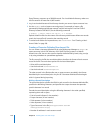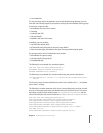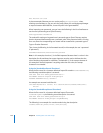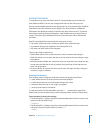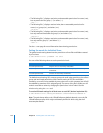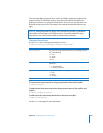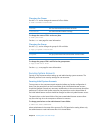
Chapter 8 Working with Users and Groups 119
Importing Users and Groups
You can use dsimport to import user and group accounts. into a folder. The dsimport
tool permits logging at three levels with the
-l switch. You can use the dsimport tool
to import any number of records from a flexible text–delimited file. See the
dsimport
man page for more information.
See the Open Directory administration guide for a list of record types and attributes.
This guide also describes how to edit permitted attributes for each record type for use
in an LDAP folder.
The dsimport tool is located in /usr/bin/.
See “Creating a Character-Delimited User Import File” on page 120 for information
about the formats of the files you can import.
$ dsimport (-g|-s|-p)
file
path
(O|M|I|A) -u
user
-p
password
[
options
]
To import users and groups:
1 Create a file containing the accounts to import, and place it in a location accessible
from the importing server.
You can export this file from an earlier version of Mac OS X Server or AppleShare IP 6.3,
or create your own character-delimited file. See “Creating a Character-Delimited User
Import File” on page 120.
Parameter Description
-g|-s|-p You must specify one of these to indicate the type of file you’re
importing:
-g for a character-delimited file
-s for an XML file exported from Users & Groups in Mac OS X
Server version 10.1.x
-p for an XML file exported from AppleShare IP version 6.x
file
The path of the file to import.
path
The path to the Open Directory directory domain where the
records will be added.
O|M|I|A Specifies how user data is handled if a record for an imported user
already exists in the folder:
O: Overwrite the matching record.
M: Merge the records. Empty attributes in the folder and assume
values from the imported record.
I: Ignore imported record and leave existing record unchanged.
A: Append data from import record to existing record.
user
The name of the folder administrator.
password
The password of the folder administrator.
options
Additional command options. To see available options, execute the
dsimport command with no parameters.




